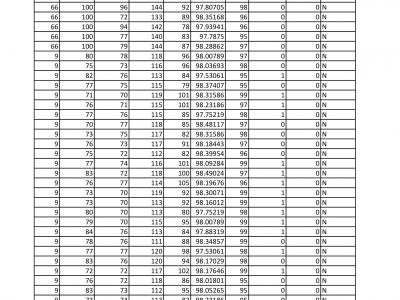Wearable Sensing
The given Dataset is record of different age group people either diabetic or non diabetic for theie blood glucose level reading with superficial body features like body temperature, heart rate, blood pressure etc.
The main purpose of the dataset is to understand the effect of blood glucose level on human body.
The different superficial body parameters show sifnificant variation according to change in blood glucose level.
- Categories:
 10827 Views
10827 ViewsThe data provided corresponds to the open-source codes and reference images from a computer interface for real-time gait biofeedback using a Wearable Integrated Sensor System for Data Acquisition.
This data is the supplmementary material of the publication I. Sanz-Pena, J. Blanco and J. H. Kim, "Computer Interface for Real-Time Gait Biofeedback Using a Wearable Integrated Sensor System for Data Acquisition," in IEEE Transactions on Human-Machine Systems, https://doi.org/10.1109/THMS.2021.3090738
- Categories:
 321 Views
321 Views1.Visualization of convolutional neural network layers for one participant at ROI 301 * 301
2.Convolutional neural network structure analysis in Matlab
3.Convolutional neural network Matlab code
4.Videos of brightness mode (B-mode) ultrasound images from two participants during the recorded walking trials at 5 different speeds
- Categories:
 758 Views
758 ViewsThis database has been developed with reference to the problem of gesture recognition. It contains inertial data related to five gestures: 1) Up: sharp movement upwards, 2) Down: sharp movement downwards, 3) Circle: movement in a circular shape, 4) Left: sharp movement to the left, 5) Right: sharp movement to the right. Data have been recorded with a smartwatch, namely Samsung Gear S, worn on right wrist.
- Categories:
 737 Views
737 ViewsThe MAUS dataset focused on collecting easy-acquired physiological signals under different mental demand conditions. We used the N-back task to stimuli different mental workload statuses. This dataset can help in developing a mental workload assessment system based on wearable device, especially for that PPG-based system. MAUS dataset provides ECG, Fingertip-PPG, Wrist-PPG, and GSR signal. User can make their own comparison between Fingertip-PPG and Wrist-PPG. Some study can be carried out in this dataset
- Categories:
 6285 Views
6285 ViewsThe data set is collected using Neurosky MindWave 2.0 Headset. It uses a single dry electrode placed at FP-1 position for the acquisition of EEG signals. The data is collected from Healthy Individuals and Epileptic Patients performing different Activities of Daily Living (ADLs) in an unconstraint environment.
- Categories:
 1483 Views
1483 Views
This dataset is proposed for human activity recognition tasks. The static activities including sitting, standing, and laying, as well as walking, running, cycling, and walking upstairs/downstairs. Each activity lasts for 2 minutes, 50 subjects were involved in the experiments.
- Categories:
 591 Views
591 Views
Wearable sensors can efficiently detect human body movements with the ability to be extended to an Internet-of-Things (IoT) platform. In this platform, integration of wearable sensors, smartphones, and activity recognition takes place on a web-based application. A SensorTile kit from STMicroelectronics is an IoT module that packs powerful processing capabilities and is mostly used for activity detection. It consists of a 3-axis accelerometer, 3-axis gyroscope, 3-axis Magnetometer and Pressure, Temperature, and Humidity sensors.
- Categories:
 293 Views
293 ViewsReliable fatigue assessment is desired in many different fields and environments. An efficient fatigue evaluation tool is promising in reducing fatal errors and economic loss in industrial settings. This dataset contains electroencephalographic (EEG) signals obtained
from an 8-channel OpenBCI headset, as well as biometric measurements obtained from the Empatica E4 wristband. Signals obtained from the E4 include: Photopletismography (PPG), heart rate, inter-beat interval (IBI), skin temperature and Electrodermic Activity
- Categories:
 1358 Views
1358 Views






